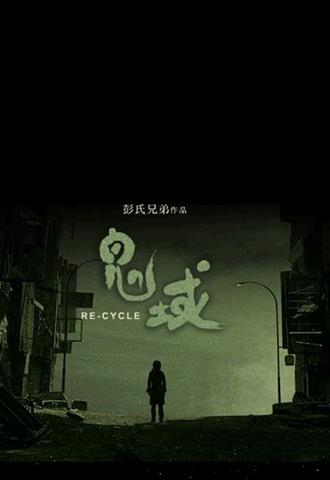Slashing swords, splashing blood, and flashy CGI – not to mention a hot chick in school uniform – sound like a cool combination, but the life bleeds out of BLOOD: THE LAST VAMPIRE long before the final reel.
 Hey, you! Mr. CGI development guy – I’m talking to you! The one who created the software that renders those splashy red blotches of computer-generated “blood” that fly across the screen throughout BLOOD :THE LAST VAMPIRE – I am calling you out. What the hell were you thinking? You toil in your workshop like a mad scientist fiendishly laboring over some hideous experiment in his lab, and when finished, instead of having a last-minute pang of conscience and destroying your misbegotten creation before it falls into the wrong hands, you deliver it to some hack-tacular filmmakers who use it with all the finesse of a five-year old who inadvertently got his hands on daddy’s paint gun. The results are about as fun as watching somebody shake up a bottle of champagne before popping the cork: it’s good for a giggle the first time, but after 90 minutes – hell, after ten minutes – it gets really old.
Hey, you! Mr. CGI development guy – I’m talking to you! The one who created the software that renders those splashy red blotches of computer-generated “blood” that fly across the screen throughout BLOOD :THE LAST VAMPIRE – I am calling you out. What the hell were you thinking? You toil in your workshop like a mad scientist fiendishly laboring over some hideous experiment in his lab, and when finished, instead of having a last-minute pang of conscience and destroying your misbegotten creation before it falls into the wrong hands, you deliver it to some hack-tacular filmmakers who use it with all the finesse of a five-year old who inadvertently got his hands on daddy’s paint gun. The results are about as fun as watching somebody shake up a bottle of champagne before popping the cork: it’s good for a giggle the first time, but after 90 minutes – hell, after ten minutes – it gets really old.
Not that I want to blame everything wrong with BLOOD: THE LAST VAMPIRE on the computer-generated imagery – there is plenty of blame to go around. The source material –a piece of Japanese anime – is an over-rated technical exercise with a couple of cool scenes but little in the way of story or characterization. The director of the live-action remake doesn’t know what to do except string one repetitious action scene together after another. And the screenplay is almost a parody of cliched movie writing.
In fact, let’s play a little game about the script. You folks at home, answer these questions:
- When our vampire-slaying heroine Saya (Gianna Jun) appears to make a mistake (it looks as if she has killed a human instead of a vampire), (A) it leads to a major plot crisis, recriminations, guilt, and soul searcing; or (B) our heroine is never wrong.
- After a heated face off with guns drawn, the leader of the secret organization for whom Saya works will (A) disarm his rogue partner or (B) turn his back on said rogue partner, allowing himself to be shot like an idiot who is too stupid to live.
- It is (A) necessary to provide exposition explaining why the “vampires” in the film turn into bad computer-generated gargoyles like something in a Sci Fi Channel movie or (B) who cares?
- It is (A) necessary to explain how to kill these bad CGI gargoyles or (B) who cares as long as Gianna Jun looks hot in her school girl uniform while killing them?
- When Saya finally confronts Onegin (the “Last Vampire” of the title, played by Koyuki), the script should (A) provide some new twist on the confrontation or (B) borrow the ending of THE EMPIRE STRIKES BACK.
If you answered (A) to any of the above, you are not yet ready to write BLOOD: THE LAST VAMPIRE.
To its credit, the screenplay does fill in Saya’s back story, adding a personal motivation for her quest to slay vampires, along with a nemesis in the form of the Onegin character – which combine to give the live-action feature a dramatic conclusion that the anime version of BLOOD: THE LAST VAMPIRE lacked.
There is also an attempt to soften up the Saya character, giving her an American high-school student as a friend so that we can see her relating to someone on a human level. Korean actress Gianna Jun (a.k.a., Jun Ji-hyun, also spelled Jeon Ji-hyeon) has the right soulful look to imply some humanity lurking beneath the cold-hearted vampire-killing exterior, but the decision to film BLOOD: THE LAST VAMPIRE almost entirely in English renders her vocal performance somewhat akward. The same holds true for Japanese actress Koyuki, who otherwise cuts a visually striking figure as Onegin. (The anime film used English for scenes set upon an American airbase in Japan; the live-action version uses English for almost all scenes except flashbacks to Saya’s past.)
The rest of the cast is unremarkable except for Liam Cunningham, who is reasonably convincing as Saya’s boss until the script forces him to make a stupid, fatal mistake.
Taken on their own, the action scenes are flashy and fun, but they grow repetitious faster than the flash of Saya’s blade. It doesn’t help that there is no special way of killing vampires: Saya doesn’t have to hit a particular weak spot, impale their hearts, or cut off their heads; she just has to hack and slash away – which makes it all seem too easy, even when she is taking on dozens of attackers at once. The scene is obviously meant to compare with Bruce Lee’s battle in ENTER THE DRAGON, but the sheer numbers are not enough; the extensive wire work and fight choreography are mitigated by the use of computer-generated imagery, which puts that unnatural sheen on the action, robbing the scenes of the visceral impact, catchy editing rhythms, and ballet-like quality that mark the best Fant-Asia fantasy films.
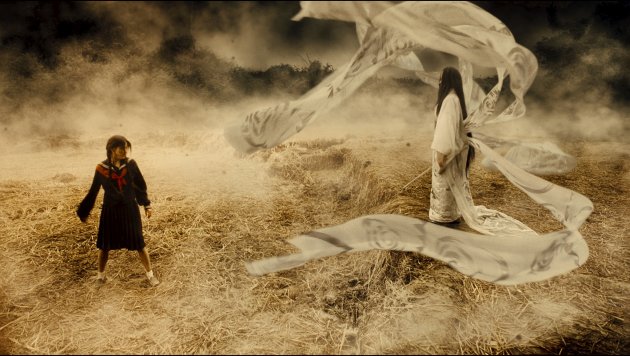
The one exception is the final face-off between vampire and vampire hunter. Here, the digital effects are used to craft the flowing robes of silk from Onegin’s gown, which reach out like tentacles to ensare Saya. There is a poetic beauty to this battle that lifts it above the earlier sword-fights, with their crude bloodshed. Too bad the script had to weight the scene down with the big dramatic “revelation.” If there is one thing I never want to see in another movie, it’s a scene wherein the villain tells the hero “You’re really one of us,” while extending an invitation to the Dark Side.
Another thing I would never like to see again is half-breed vampire killers. We’ve seen it all before with characters like Blade, Vampire Hunter D, and Sonja Blue (in the Nancy Collins novels starting with Sunglasses After Dark): they’re half-human and half-vampire; their vampire side gives them the power they need to hunt other vampires, but they fear succumbing to the blood lust and losing their humanity. Despite her Japanese origin, Saya is less in common with Vampire Hunter D than with Sonja Blue, who is also an ageless young girl hunting her own kind; the difference is that Sonya has a more interesting back story, and her inner conflict plays out in a more dramatic way throughout the novels, instead of being played like a weak trump card at the climax. (This is not an element of the animated BLOOD: THE LAST VAMPIRE, which hinted that Saya was the last “original” vampire, hunting down some kind of mutant strain of the species.)
The live-action rendition of BLOOD: THE LAST VAMPIRE will probably please fans of the anime short subject, but more general audiences and even fans of Asian horror and Fant-Asia flicks will grow restless with the endless swordplay’s mind-numbing lack of variation. The funny thing is that, pulled out of context and viewed on their own, the scenes are not bad, which is why the film looks so cool when viewed in short clips online. With a plot that serves mostly to string the set-pieces along, BLOOD THE LAST VAMPIRE might be a project that would have worked better as a series of high-octane webisodes, rather than a full-length feature film.
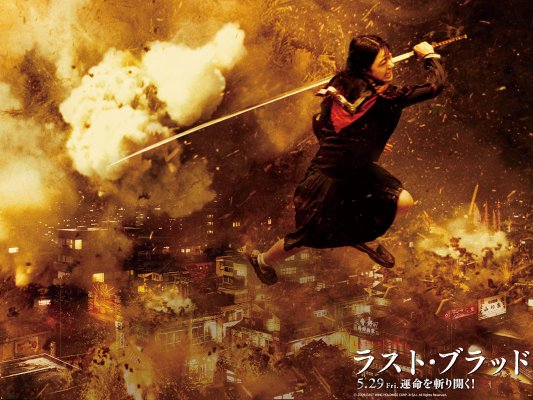
BLOOD: THE LAST VAMPIRE (2009). Directed by Chris Nahon, Screenplay by Chris Chow, based on characters created by Kenji Kamiyama & Katsuya Terada. Cast: Gianna Jun, Allison Miller, Masiela Lusha, J.J. Field, Koyuki, Liam Cunningham, Yasuaki Kurata, Michael Byrne, Colin Salmon.
[serialposts]
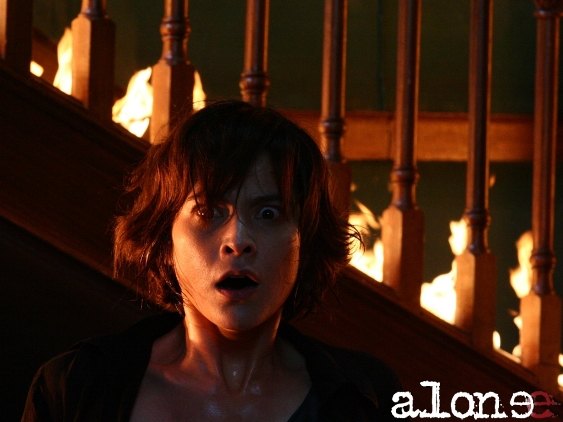
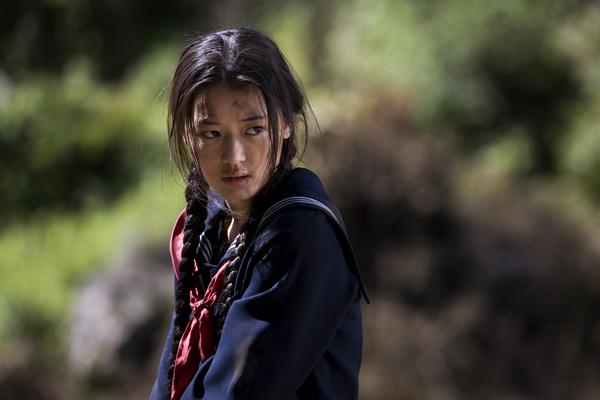 BLOOD: THE LAST VAMPIRE is a live-action horror film based on the 2001 anime short subject of the same title. Shot in the style of a Hong Kong fant-asia film, with lots of martial arts swordplay choreographed by Corey Yuen (THE ONE, X-MEN), BLOOD: THE LAST VAMPIRE is a Chinese-French co-production, with a French director (Chris Nahon – KISS OF THE DRAGON), a Chinese screenwriter (Chris Chow – THE EYE 3) and a Chinese producer (Bill Kong – CROUCHING TIGER, HIDDEN DRAGON), and an international cast. Irishman Liam Cunningham (Dario Argento’s THE CARD PLAYER) is Michael, agent of a super-secret organization tracking down vampires on an American airbase in Japan during the Vietnam War. Japanese actress Koyuki (KAIRO, a.k.a. “Pulse”) is Onigen, the vampire queen who is the ultimate target of Michael’s organization. And Korean star Gianna Jun is Saya, the half-human vampire-hunter hybrid who works as Michael’s assassin in order to further her own quest for revenge against the demons that killed her father.
BLOOD: THE LAST VAMPIRE is a live-action horror film based on the 2001 anime short subject of the same title. Shot in the style of a Hong Kong fant-asia film, with lots of martial arts swordplay choreographed by Corey Yuen (THE ONE, X-MEN), BLOOD: THE LAST VAMPIRE is a Chinese-French co-production, with a French director (Chris Nahon – KISS OF THE DRAGON), a Chinese screenwriter (Chris Chow – THE EYE 3) and a Chinese producer (Bill Kong – CROUCHING TIGER, HIDDEN DRAGON), and an international cast. Irishman Liam Cunningham (Dario Argento’s THE CARD PLAYER) is Michael, agent of a super-secret organization tracking down vampires on an American airbase in Japan during the Vietnam War. Japanese actress Koyuki (KAIRO, a.k.a. “Pulse”) is Onigen, the vampire queen who is the ultimate target of Michael’s organization. And Korean star Gianna Jun is Saya, the half-human vampire-hunter hybrid who works as Michael’s assassin in order to further her own quest for revenge against the demons that killed her father. Gianna (whose real name is Jun Ji-hyun, also spelled Jeon Ji-hyeon) is a popular actress and product-pitchwoman in her native country, most well known for romantic comedys like MY SASSY GIRL (2001), for which she won a Best Actress award at the Daejong Film Festival. BLOOD: THE LAST VAMPIRE is her first horror film, but she has appeared in other types of cinefantastique, usually love stories with romantic overtones, such as WINDSTRUCK and IL MARE (2000), the latter of which was remade as THE LAKE HOUSE with Keanu Reeves and Sandra Bullock. Although some of her titles are available on DVD in the U.S., BLOOD: THE LAST VAMPIRE (which is her first English-language film) is the first to receive a relatively high-profile theatrical release in North America, making it her debut for most American viewers.
Gianna (whose real name is Jun Ji-hyun, also spelled Jeon Ji-hyeon) is a popular actress and product-pitchwoman in her native country, most well known for romantic comedys like MY SASSY GIRL (2001), for which she won a Best Actress award at the Daejong Film Festival. BLOOD: THE LAST VAMPIRE is her first horror film, but she has appeared in other types of cinefantastique, usually love stories with romantic overtones, such as WINDSTRUCK and IL MARE (2000), the latter of which was remade as THE LAKE HOUSE with Keanu Reeves and Sandra Bullock. Although some of her titles are available on DVD in the U.S., BLOOD: THE LAST VAMPIRE (which is her first English-language film) is the first to receive a relatively high-profile theatrical release in North America, making it her debut for most American viewers. 
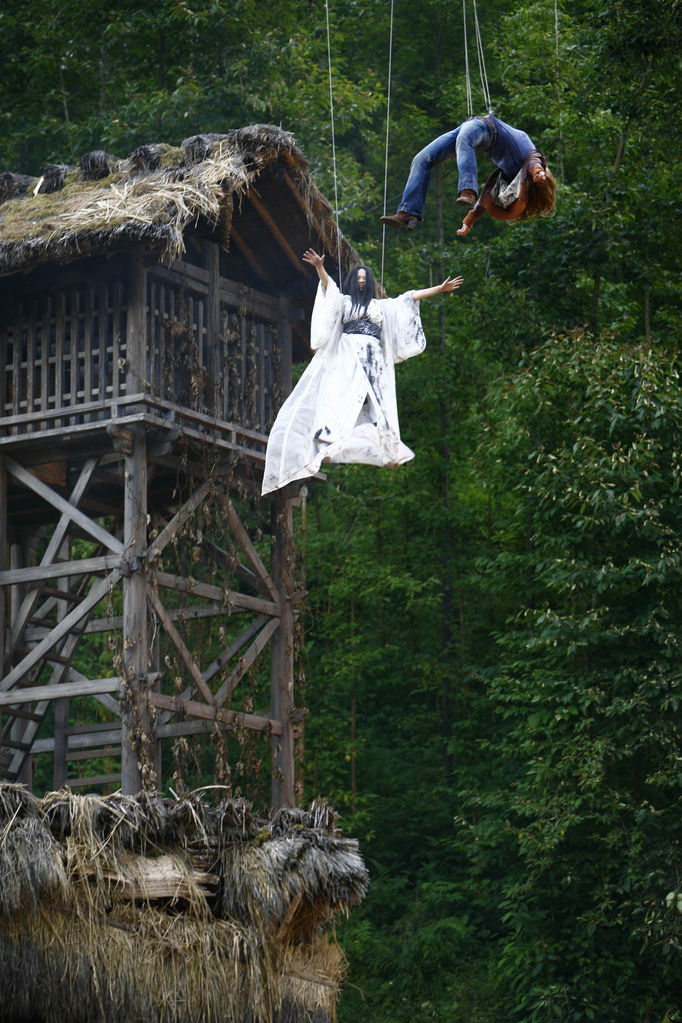

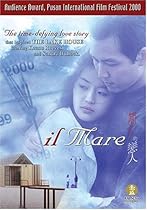
 THIRST – a new “vampire romance” from Korean writer-director Park Chan-wook (LADY VENGEANCE,
THIRST – a new “vampire romance” from Korean writer-director Park Chan-wook (LADY VENGEANCE, 
